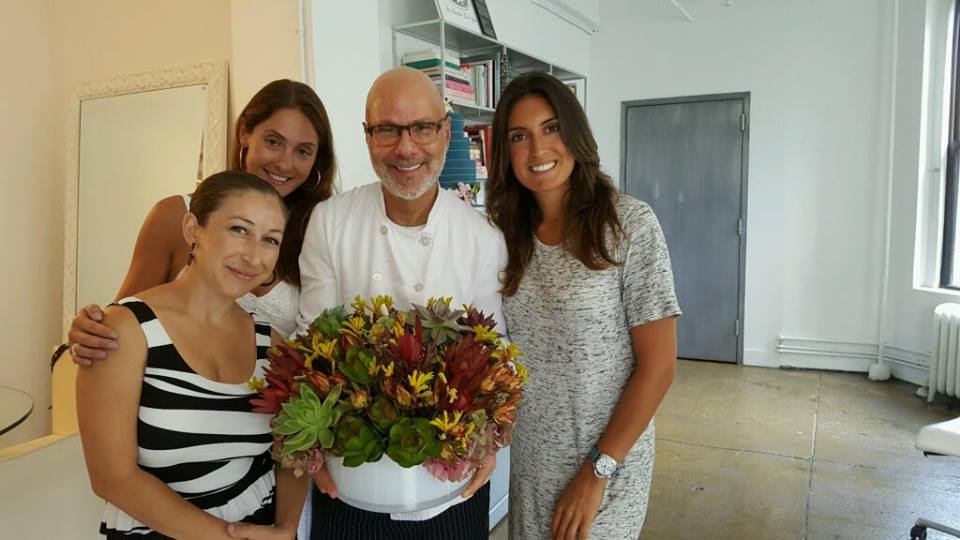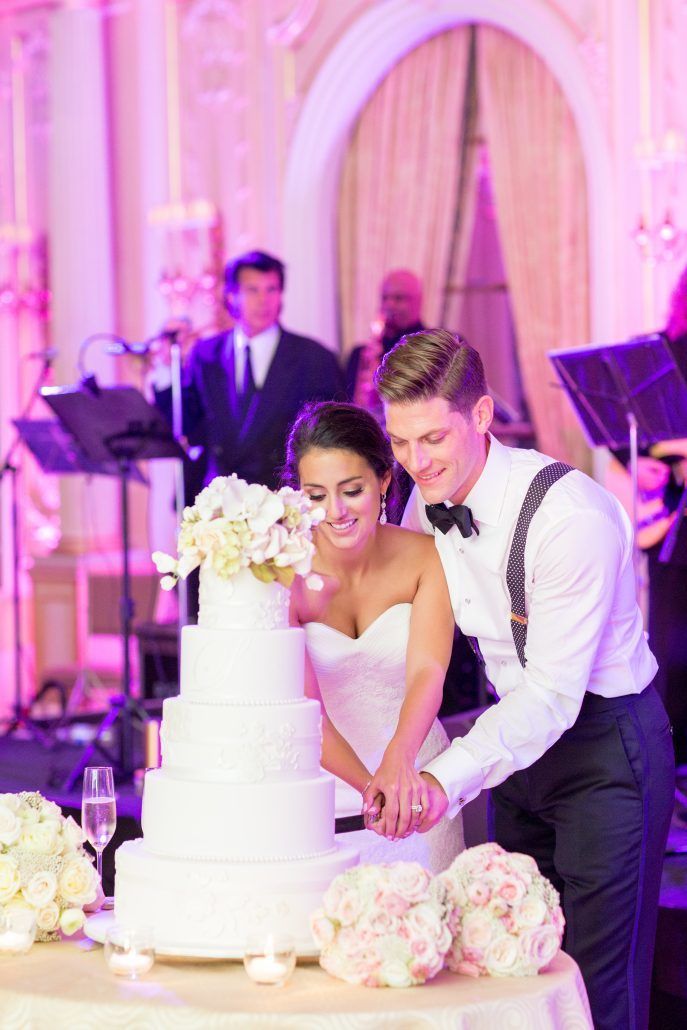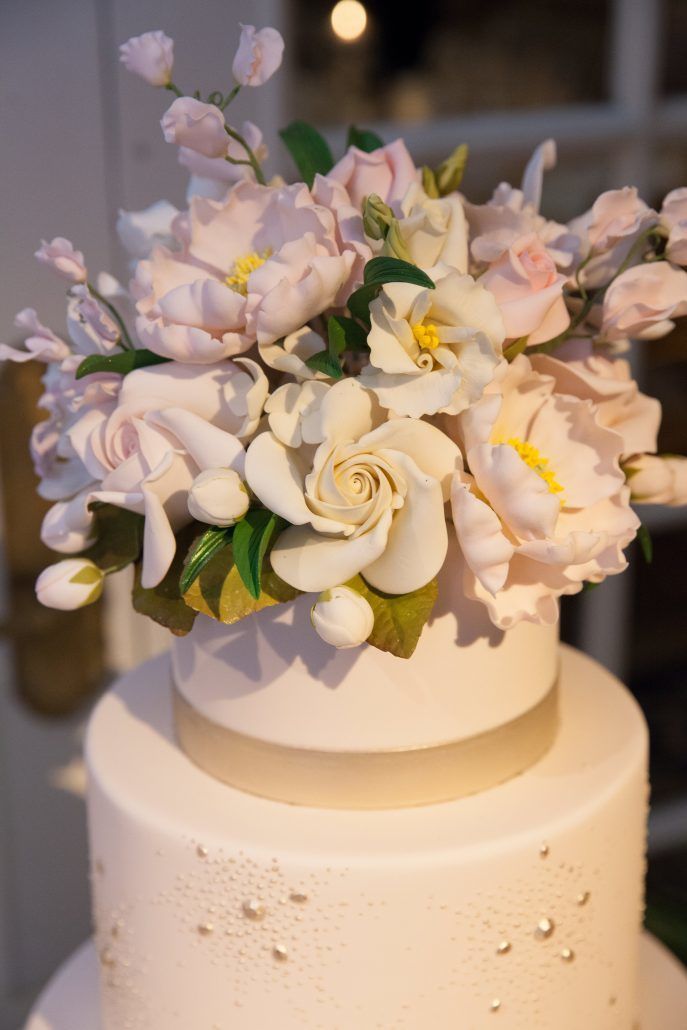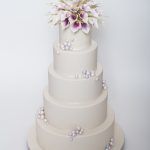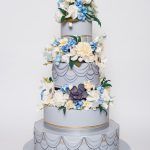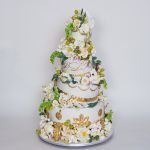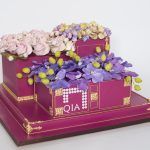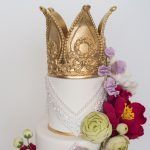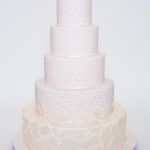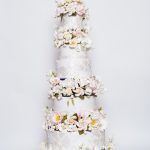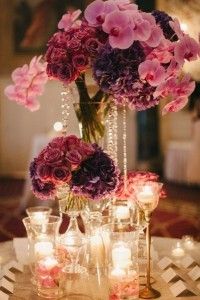Planning & Inspiration
Interview with Ron Ben-Israel of RBI Cakes
World-renowned cake maker and a master in the art of decorative sugar, Ron Ben-Israel was aptly dubbed “the Manolo Blahnik of wedding cakes” by the New York Times in 2014.
After serving in the Israeli military and touring the world as a professional modern dancer, Ron began baking; a pursuit inspired by his Viennese mother, who passed on a fascination with the discipline and chemistry of cake construction. He was discovered by Martha Stewart in 1995, when she was drawn to one of his cakes in a bakery store window. Stewart was starting a wedding magazine at the time and called Ron in to meet her, encouraging him to start his own business.
RBI Cakes quickly rose to the top of couture cake design. His intricate creations have been featured in countless publications and TV shows, and are frequently spotted at the finest venues in New York City. Ron starred as the host and judge of the hit show Sweet Genius on The Food Network, and currently serves as the Master Pastry Instructor at the International Culinary Center in New York City. Ron’s charity work includes promotion of same-sex marriage and LGBTQ rights, as well as involvement in City Harvest and other local NYC organizations.
We’ve had the privilege of working with Ron on many beautiful weddings, and love seeing how our floral and cake designs merge. After stopping by his studio for a delightful afternoon of champagne and cake-tasting, we had the honor of speaking to Ron about his past, his process, and his dreams for the future of cake-making.
First, I’m curious about your history in dance and military training – obviously both are deeply rooted in discipline, commitment, and sacrifice. Do you feel that these experiences awarded you the drive to teach yourself a new art form? Does deciding you will learn an entirely new skill set from scratch require a certain “reckless” confidence?
There is a certain common principle to training in the fine arts, dance – and the military. I call it “do first – ask later.” If I’m willing to experiment with a new idea, a movement, or an order given by a person more experienced than me, I can learn. I don’t need to know the whole picture at that initial moment, only to be open to a new experience. Trusting that process allows me to move forward and temporarily suspend my inhibitions. Later on comes the deep learning through information and repetitiveness. Rather than describe my experience as “reckless,” I would define it as being open to the process – and this could be by necessity, as in the compulsory army service, or by choice – as with my cake career.
Even looking at your cakes through a screen, they appear to me almost as living things. I feel as though I can see the dancer in you creating movement and relishing asymmetry. In designing these cakes, do you find yourself channeling dance and a dancer’s keen sense of motion and space?
Thank you for this observation. When I started making cakes for weddings and celebrations, I wasn’t very inspired by what was popular then in the cake decorating world. Everything seemed static and “old fashioned”. On the floral front, though, floral designers were coming up with exciting shapes and colors, and the bridal fashion industry was getting a vivid boost from designers such as Vera Wang. I wanted to bring those exciting developments into the cake arena. Even though I wasn’t very experienced, I relied on my dance and art training to explore a certain sense of movement in my cakes. To this day, I love our popular concept of serene tall cake tiers, perfectly iced, contrasted with a lush cascade of sugar flowers wrapping around them.
Particularly for cakes that take many hours to make, are there moments when you and the cake are “getting along” and other moments when the cake seems to be resisting your intentional design? How much freedom do you allow during the process for spontaneous, circumstantial, or instinctual changes?
I tell my crew that our work should always be “perfectly executed” and recognized as our brand. Just like you would know that a garment came from a certain fashion house. But it’s true that some concepts, no matter how well thought of on paper, don’t comply to my wishes when it comes to fulfilling the vision with butter and sugar. Because we’re dealing with a perishable medium and as we have deadlines to meet, I may change directions in order to deliver a finished cake. Luckily, with experience, there are enough options available to me and my crew to accomplish each order in a way to satisfy our clients. After the completion of the project I may analyze the results so we can learn from the experience for the next time. I guess that’s the eternal conflict of each creative person – never being fully satisfied, and always striving to do more.
I became so mesmerized looking at your cake gallery that I completely forgot these cakes were for eating! Can you tell me more about creating consumable art? What does it feel like to watch people slice open and eat a cake you’ve made? I feel as though it must be quite healthy creatively, to persistently devote yourself to creating something temporary.
I would not want to switch places with an artist who creates art to be presented in a gallery or a museum. I love my job and my position as the baker & cake designer who provides a product that is attractive to the eye and delicious to the palate. It’s a special place to be, as all our cakes are meant to be displayed and consumed during celebrations. I get to cooperate with a creative community of designers from all disciplines – stationery, flowers, lighting, fashion, architecture, music, and culinary. The cake is seen from the beginning of the reception, and is often the last ceremonial offering of the event. When the celebrants cut the cake, they symbolically serve their guests and share the sweetness with all. That is the moment I love the most!
- Ron Ben-Israel Cakes
- Ron Ben-Israel Cakes
- Ron Ben-Israel Cakes
- Ron Ben-Israel Cakes
- Ron Ben-Israel Cakes
- Ron Ben-Israel Cakes
- Ron Ben-Israel Cakes
- Ron Ben-Israel Cakes
Lastly, tell me a little about what you’re working on now and what dreams you have for the future of RBI Cakes?
I’ve been teaching for almost as long as I’ve been making cakes – I’m used to training with others and sharing knowledge and techniques, and the class environment is where I strive. Besides being part of the faculty of the International Culinary Center, I’ve been conducting three-day intensives in my new facility at the heart of New York City’s Garment District. It’s been very satisfying to host enthusiastic students from all over the world, and show them where our magic takes place. I’m also launching a line of baking tools for the home baker this Fall, which I’m very excited about. Hopefully, the products will be available at some of the popular home goods stores soon. I’m involved with a few interesting startups in the dessert and party spaces, and the whole process is new and exciting for me – of course, none of these may lead to success, but I’m learning a lot. And finally, besides designing cakes, I’m still searching for novel ideas to incorporate my experience with cakes into a new TV show – any suggestions would be welcome!
Whatever unfolds for RBI Cakes, we look forward to feasting our eyes on many more masterpieces.

